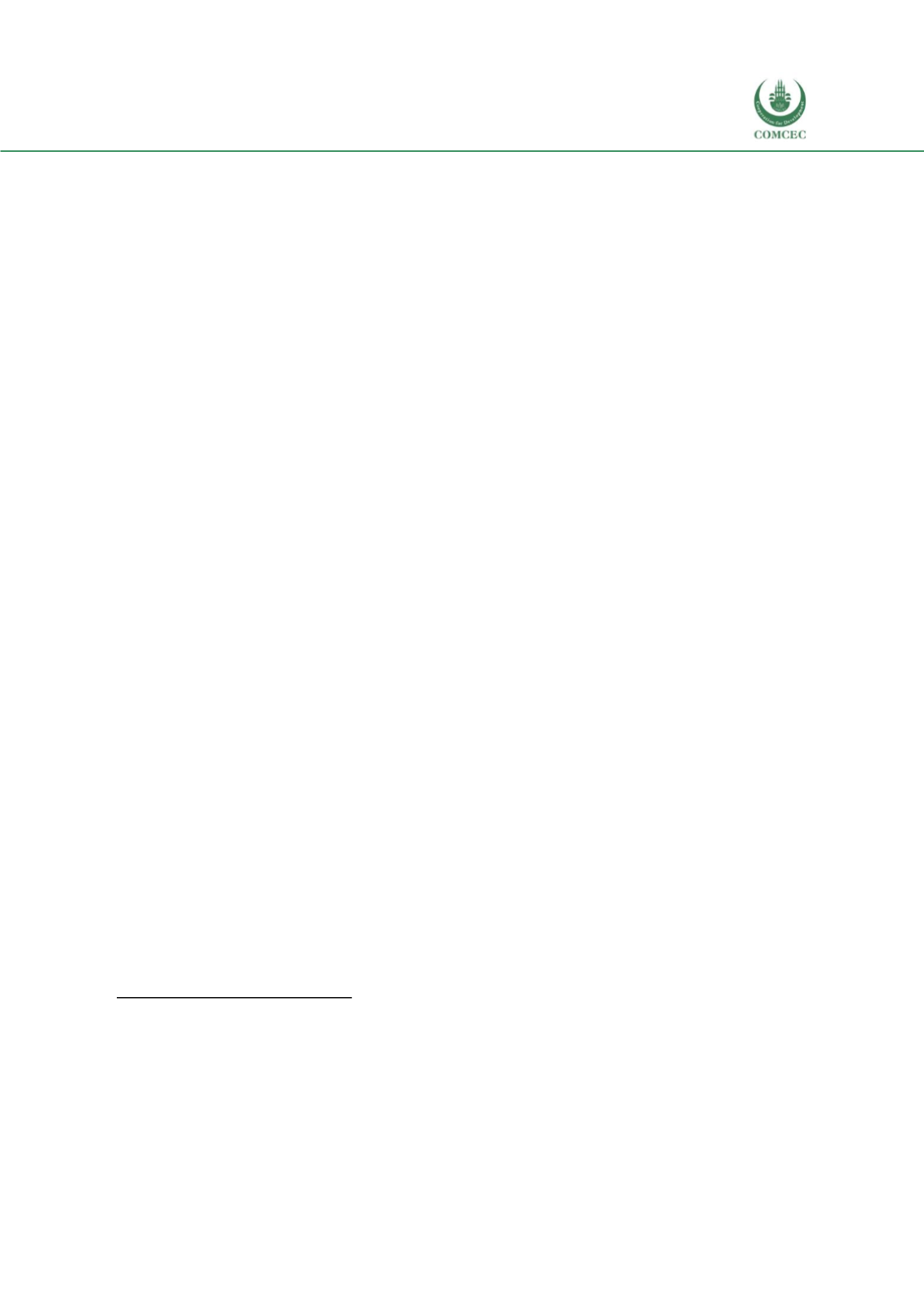

Increasing the Resilience of the Food Systems
In Islamic States in Face of Future Food Crises
91
Niger's food security landscape. The GoN and communities worked alongside partners to
develop contingency plans, increase capacity of early warning units, incorporate vulnerability
reduction into development and conflict mitigation efforts, and bolster meteorological and
market surveillance and dissemination.
382
Addressing malnutrition means addressing several factors that undermine the availability and
consumption of cleanwater and diverse, nutritious foods. Availability of diverse food is limited
due to shocks, climate change, population growth, and underdeveloped food systems. Access is
primarily restricted by insufficient purchasing power.
383
E-voucher programs are being
deployed with the aim of improving efficiency, targeting, and integration of private sector
players in a subsidized input delivery system. The 2018 e-voucher program in Niger was
conducted by the General Directorate for Agriculture (DGA).
384
Mitigation: Risk and Vulnerability Reduction
For the purposes of risk mitigation, emergency response coordination and monitoring systems
are provided by the DNPGCCA Permanent Secretariat and supportedby the Food Crisis Unit and
the Social Safety Cell, reporting to the Prime Minister's Office. The SP/DNPGCCA act as an
interface between the different groups of actors and provide the communication function for the
visibility of efforts in the prevention and management of disasters and crises.
Tools and actions used by the GoN reduce certain risks, such as locust infestation and, toa lesser
extent, bush fires.
To increase crop yields and rain-fed cereal production from 5.5million tons in 2015 to8 million
tons in 2021, the Government plans to
develop a national soil fertilization strategy;
promote agronomic research;
intensify the production of improved seeds; and
facilitate producers' access to fertilizers, plant protection products, tractors, and animal
traction kits.
In 2015, the GoN alsodeployed
the
InvestmentFund for Food and Nutrition Security (FISAN) for
financing producers in the agricultural value chain.
385
Adaptation: Social Safety Nets
Analyses carried out over the last 30 years show that food insecurity in Niger results from cereal
or fodder deficits and lack of food and nutrients for the most vulnerable groups.
382
USAID. (2017).
USAID Office of Food for PeaceFood Security Desk Review for Niger
. Retrieved from:
https://www.usaid.gov/sites/default/files/documents/1866/FFP-Niger-Food-Security-Desk-Review-Oct2017.pdf383
Feed The Future. (2018).
Global Food Security Strategy (GFSS) Niger Country Plan
. Retrieved from:
https://www.usaid.gov/sites/default/files/documents/1867/Niger_Country_Plan_Final_Public_Scrub_Clean_WSEdits_8.13.pdf
384
Digitizing Agriculture: Evidence fromE-Voucher Programs inMali, Chad, Niger, and Guinea. Retrieved from:
http://documents.worldbank.org/curated/en/915401555082222586/Digitizing-Agriculture-Evidence-from-E-Voucher-programs-in-Mali-Chad-Niger-and-Guinea
385
Fonds d’Investissement pour la Sécurité Alimentaire et Nutritionnelle (FISAN). Retrieved from:
http://www.reca-
niger.org/spip.php?article1157















